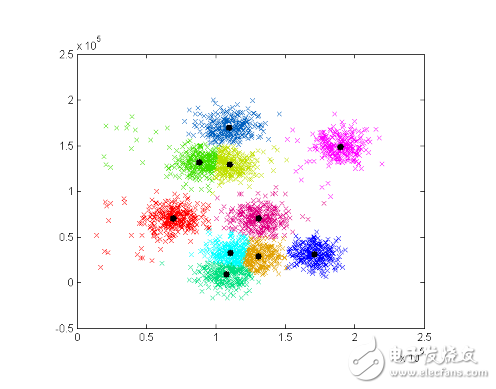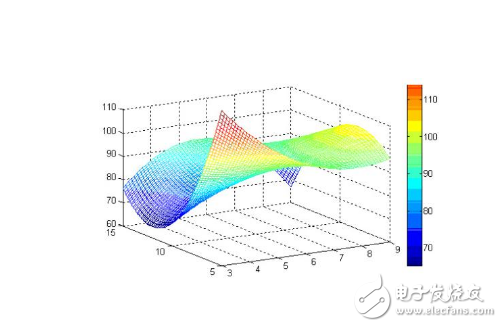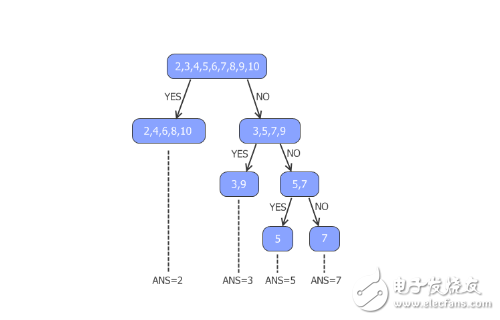First, particle swarm optimization

The particle swarm optimization algorithm, also known as the particle swarm optimization algorithm (ParTIcle Swarm OpTImizaTIon), abbreviated as PSO, is a new evolutionary algorithm (Evolu2TIonary Algorithm - EA) developed in recent years. The PSO algorithm is a kind of evolutionary algorithm, and The genetic algorithm is similar. It also starts from the random solution and finds the optimal solution through iteration. It also evaluates the quality of the solution by fitness, but it is simpler than the genetic algorithm rule. It has no crossover and mutation of the genetic algorithm. (Mutation) operation, which finds the global optimal by following the current searched optimal value. This algorithm has attracted the attention of the academic community because of its advantages of easy implementation, high precision and fast convergence, and it is displayed in solving practical problems. Its superiority.
Optimization problems are often encountered in industrial design, and many problems can ultimately be attributed to optimization problems. In order to solve various optimization problems, many optimization algorithms have been proposed, and the most famous ones are mountain climbing methods and genetic algorithms. There are two main problems in the optimization problem: one is to find the global minimum point, and the other is to require a higher convergence speed. The hill climbing method has a high precision, but it is easy to fall into a local minimum. Genetic algorithm is a kind of evolutionary algorithm (Evolutionary Algorithms), which seeks the optimal solution by imitating the choice of nature and the mechanism of inheritance. The genetic algorithm has three basic operators: selection, intersection, and variation. However, the programming implementation of genetic algorithm is more complicated. First, the problem needs to be coded. After finding the optimal solution, the problem needs to be decoded. The implementation of the other three operators also has many parameters, such as crossover rate and mutation rate, and these parameters are The choice seriously affects the quality of the solution, and most of the current choices of these parameters rely on experience. In 1995, Dr. Eberhart and Dr. Kennedy proposed a new algorithm; Particle Swarm Optimization (PSO) algorithm. This kind of algorithm has attracted the attention of academic circles because of its advantages of easy implementation, high precision and fast convergence, and it has demonstrated its superiority in solving practical problems.
The Particle Swarm Optimization (PSO) algorithm is a new evolutionary algorithm (Evolu2tionaryAlgorithm-EA) developed in recent years. The PSO algorithm is a kind of evolutionary algorithm, similar to the genetic algorithm. It is also based on the random solution and iterative. Find the optimal solution, which is also to evaluate the quality of the solution through fitness. But it is simpler than the rules of the genetic algorithm, it does not have the crossover and mutation of the genetic algorithm. It finds the global optimal by following the current searched optimal value
Second, the genetic algorithm
Genetic algorithm is used to solve optimization in computational mathematics and is a kind of evolutionary algorithm. Evolutionary algorithms were originally developed with reference to some phenomena in evolutionary biology, including genetics, mutation, natural selection, and hybridization. The genetic algorithm is usually implemented as a simulation. For an optimization problem, a population of abstract representations (called chromosomes) of a certain number of candidate solutions (called individuals) evolve toward a better solution. Traditionally, the representations are used (ie strings of 0 and 1), but other representations can be used. Evolution begins with a population of completely random individuals and then occurs from generation to generation. In each generation, the fitness of the entire population is evaluated, and multiple individuals are randomly selected from the current population (based on their fitness), and new life populations are generated by natural selection and mutation, which is the next iteration of the algorithm. Become the current population.

main feature
Genetic algorithm is a general algorithm for solving search problems and can be used for various general problems. The common features are:
1 First form a set of candidate solutions
2 Calculate the fitness of these candidate solutions based on certain adaptive conditions
3 Reserve some candidate solutions according to fitness, and give up other candidate solutions
4 Perform some operations on the reserved candidate solutions to generate new candidate solutions.
In genetic algorithms, the above features are combined in a special way: parallel search based on chromosome groups, selection operations with guessing properties, exchange operations and mutation operations. This special combination distinguishes genetic algorithms from other search algorithms.
The genetic algorithm also has the following characteristics:
(1) The genetic algorithm starts searching from the cluster of problem solutions, rather than starting from a single solution. This is a great difference between genetic algorithms and traditional optimization algorithms. The traditional optimization algorithm is to find the optimal solution from a single initial value; it is easy to mistakenly into the local optimal solution. The genetic algorithm starts from the string set and has a large coverage, which is good for global selection.
(2) The genetic algorithm simultaneously processes multiple individuals in the group, that is, evaluates multiple solutions in the search space, reduces the risk of falling into the local optimal solution, and the algorithm itself is easy to achieve parallelization.
(3) The genetic algorithm basically does not use the knowledge of the search space or other auxiliary information, but only uses the fitness function value to evaluate the individual, and performs genetic operations on this basis. The fitness function is not only not subject to continuous and differentiable constraints, but its domain can be arbitrarily set. This feature greatly extends the range of applications of genetic algorithms.
(4) The genetic algorithm does not use deterministic rules, but uses the probability transition rules to guide his search direction.
(5) Self-organizing, adaptive and self-learning. When genetic algorithms use the information obtained by the evolutionary process to organize their own searches, individuals with high fitness have higher survival probabilities and obtain more adaptive genetic structures.
Third, greedy algorithm
Concept: The greedy algorithm is a method that does not pursue an optimal solution and only hopes to obtain a more satisfactory solution.
A greedy algorithm can generally get a satisfactory solution quickly, because it saves a lot of time that must be spent to find all the possibilities for finding the optimal solution. Greedy algorithms are often optimally based on current conditions, regardless of the likely overall situation. For example, when shopping for money, in order to minimize the number of coins for change, do not consider all the various publications for change, but start with the currency of the largest denomination, consider each currency in descending order, try to use For large denomination currencies, consider the next smaller denomination currency when the amount of the denomination currency is insufficient. This is the use of greedy algorithms. This method is always optimal here because of the clever arrangement of the types of coins and the face value of the coins issued by the bank. For example, if there are only coins with face values ​​of 1, 5 and 11 units, and you want to retrieve a total of 15 units of coins. According to the greedy algorithm, you should find a coin with 11 face value and 4 coins with 1 face value to retrieve 5 coins. But the optimal solution is three coins with 5 unit denominations.

Fourth, ant colony algorithm
Ant colony optimization (ACO), also known as ant algorithm, is a probabilistic technique used to find optimized paths in the graph. It was introduced by Marco Dorigo in his doctoral thesis in 1992, inspired by the behavior of ants finding paths in the search for food.
The population of nature is quite extensive, but most have the following abilities: Ants can always find the shortest path between the food source and the ant nest. Once this shortest path is discovered, the ants can line up on this road, carrying food between the food source and the ant nest. How did the ants do it?
We know that the straight line distance between 2 points is the shortest. But ants obviously don't have the sight and wisdom. They cannot see the food source from a distance, nor can they plan a suitable path to carry food. The method used by the ants is to perform a carpet search in the area around the old nest. And between them is through the path of secreting chemicals on the climb, this chemical is called (Pheromone).
When they first left the nest, the ants had two choices: R1 and R2. The chances were both equal. The ants left a pheromone when they climbed through R1 and R2. However, since the distance of R2 is short, the time required is small, and the pheromone is volatilized, so the pheromone concentration of the ants remaining on R2 is high. As a result, more and more ants choose R2 as the best path, even if they come from R1 to the food source, they will choose R2 to return to the ant nest. The ants from the old nest are also more and more inclined to R2. Under this trend, the R1 gradually no one cares.
Inspired by the way the ants chose the path, Dr. Dorigo published it in 1991 (Ant algorithm). For more than a decade, ant algorithms, as well as various improved ant algorithms, have been widely used in all aspects of real life. In the application, it can be used as a tool for network routing control. In traffic control, it also successfully solved the vehicle scheduling problem. In charting, it is used to solve color fill problems. In addition, it can be used to design large-scale timetables. The problem, the best path selection problem between two different locations, should be regarded as the most important use of the ant algorithm.
Hdmi Cables,Hdmi Cord,Micro Hdmi Cable,Extra Long Hdmi Cable
UCOAX , https://www.ucoax.com
